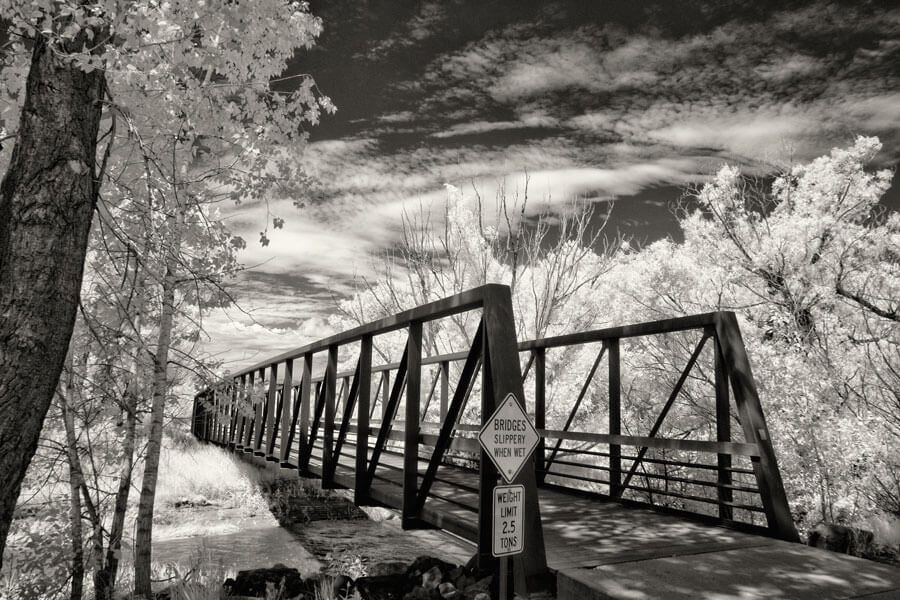Focusing for Infrared Capture, part deux
Today’s Post by Joe Farace
When passing through a lens, light waves of different colors and wavelengths don’t focus on the same plane. That’s why, most lenses can’t focus infrared wavelengths on the same plane as visible light. So when you shoot infrared images it may be necessary to slightly shift the lens’ focus: The smaller the lens’ aperture and the longer its focal length the greater this shift will be. That’s why in the past lens manufacturers placed an infrared mark on their lenses to help you make this shift
For film, the suggested practice is to focus normally—with an IR filter—and then rotate the lens’ focusing ring so the focused distance appears opposite the infrared focusing mark. When shooting IR with cameras that are converted for infrared capture the rule of thumb is to shoot at f/11 or smaller to account for the back focus change caused by the removal of the low pass and anti-aliasing filters.
- My shooting technique with mirrorless cameras and an IR filter is simple; so simple you might call it point-and-shoot infrared.
- First, You’re gonna need a sturdy tripod. No matter what kind of IR filter you use, they are all dark and handholdable shots are typically not possible. (something I sorta kinda disproved in a recent post, up to a point anyway.)
- Next, I pick exposure modes based on environmental conditions. Windy days called for Shutter Priority and on nice days I use Aperture Priority mode (remember that ole f/111?) and let the IR focusing chips fall where they may.
- Then After composing the image, I hold the filter in front of the lens and wait for the image in the EVF to settle down and compensate for the filter’s density. At modest ISO settings, you should see the IR effect directly in the EVF or LCD previews screen. Let the camera focus through the filter—if it can—because it depends on the filter. (If you focus first then put the filter on nothing may happen.) If the camera has a black & white mode I use that to get a preview the final image but shoot in RAW+JPEG mode using the JPEG for preview and the RAW for processing.
The above method is the least expensive way to shoot digital infrared. If you prefer, you can have your mirrorless camera converted for IR capture, keeping in mind that this makes it an IR-only camera. You can save a few bucks when converting your camera to infrared when ordering a conversion from LifePixel , use the coupon code “farace.”




